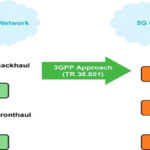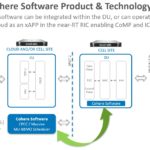A trio of mid-band radios include SoCs that handle much of the processing. RAN compute products round out the announcement.
Ericsson this week announced a trio of 5G mid-band (1 GHz to 6 GHz), massive MIMO radios that the company claims boost throughput while reducing weight and power consumption. The radios integrate 64T antennas with Ericsson Silicon, a set of SoCs that perform functions such as transport, beamforming, and layer 1/2 signal processing. The three radios fall into the company’s Antenna Integrated Radio (AIR) portfolio and include:
- AIR 6419 for maximum capacity
- AIR 3258 for maximum flexibility
- AIR 3219 for maximum coverage
 The radios range in weight from 20 kg to 27 kg, which the company says is up to 45% lighter than previous products radios. They produce 320 W of output power in the 5G mid-band frequency range. The company didn’t provide any other specifics on the three models.
The radios range in weight from 20 kg to 27 kg, which the company says is up to 45% lighter than previous products radios. They produce 320 W of output power in the 5G mid-band frequency range. The company didn’t provide any other specifics on the three models.
Radios need access networks to send baseband data to transport and core networks. Ericsson’s announcement of six additions to its RAN Compute portfolio. The company claims that these radios, which also use Ericsson Silicon SoCs, use from 15% to 20% less energy, but the company doesn’t compare those numbers to anything. We can only assume that it means compared to previous Ericsson RAN compute products. The company also claims 50% higher throughput. We can only assume that’s also compared to previous products.
![]() The new products should be available by the end of 2021.
The new products should be available by the end of 2021.
Ericsson claims that the radios and RAN computing product increase flexibility for wireless operators. That’s a similar claim made by Open RAN supporters. These new products just might be a response to the Open RAN movement.





